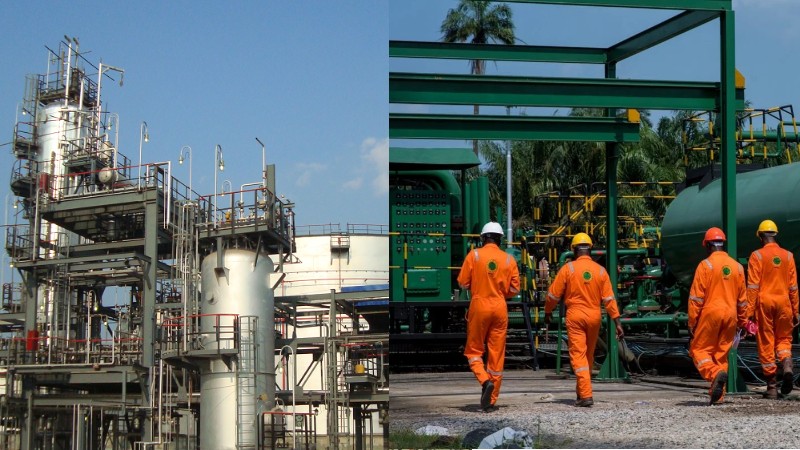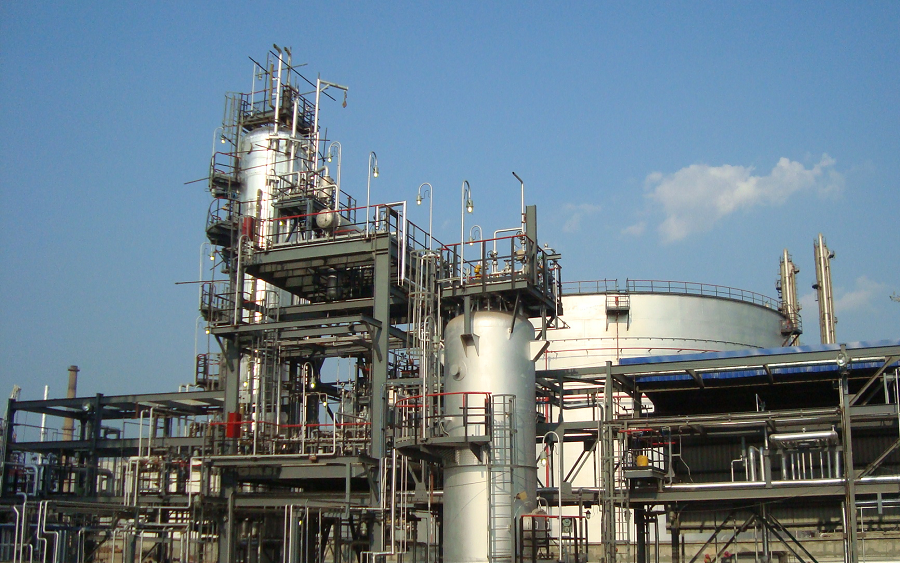Ibrahim Onoja, the Managing Director of the Port Harcourt Refining Company (PHRC), has reaffirmed that the long-awaited revival of the Port Harcourt Refinery is on track, aiming for a December start despite widespread skepticism. In a recent television appearance, Onoja echoed the assurance given by Mele Kyari, the CEO of the Nigerian National Petroleum Company Limited (NNPCL), regarding the refinery’s imminent return to operations by the end of this month.
The journey toward this momentous goal has been marked by doubts from various quarters of Nigerian society, expressing concerns over the feasibility of the refinery’s revival this year. However, Onoja’s steadfastness in confirming the refinery’s readiness stands as a testament to the substantial progress achieved in its rehabilitation.
With an emphasis on the rehabilitation’s advancement, Onoja proudly declared that the refurbishment process stands at an impressive 98% completion rate. Highlighting the commitment of over 3,000 workers engaged in the project, he highlighted their collective effort, accounting for an astounding 8.3 million man-hours with an exemplary zero lost time to injuries. Furthermore, he underlined the substantial completion of procurement and delivery processes, which have significantly contributed to the refinery’s revival.
Port Harcourt Refinery Rehabilitation Progress and Technical Advancements
Addressing concerns regarding the refinery’s modernization, Onoja provided insights into the comprehensive overhaul undergone by the facility. Stressing that the majority of the refurbishment focused on the metallic components – the static equipment – he pointed out that these fundamental elements have endured through the years, remaining relatively consistent in their functionality. He further elaborated on the upgrade of critical components, such as pumps and compressors, within the rotating equipment, signaling a move toward enhanced efficiency and performance.
Moreover, Onoja’s commitment to transparency and accountability shone through as he disclosed that the rehabilitation progress surpassed the anticipated benchmarks, reaching a remarkable 75% completion mark with an accelerated pace attributed to round-the-clock shifts operated by the diligent workforce. This substantial progress underscores the strides made in ensuring the refinery’s revival, instilling renewed hope and optimism among Nigerians eagerly awaiting its operational return.

Looking ahead, Onoja shared the optimistic projection for the Warri refinery, slated to commence operations in early 2024. This announcement serves as a beacon of promise, signaling the continuation of efforts aimed at rejuvenating Nigeria’s refining capacity and bolstering the nation’s energy independence.
Future Outlook and Warri Refinery’s Prospects
As the Port Harcourt Refinery nears its much-anticipated revival, Onoja’s resolute assurances coupled with the remarkable progress achieved instill a renewed sense of confidence among Nigerians, underscoring a crucial milestone in the nation’s quest for a robust and self-reliant energy sector.Subheading 1: President’s Promise and Lingering Hurdles
President Bola Ahmed Tinubu’s assurances regarding the revitalization of Nigeria’s refineries, notably the Port Harcourt Refinery, have encountered significant setbacks. With an initial pledge to commence operations by December, the $2.7 billion refurbishment aimed at addressing the subsidy removal and mitigating inflation appears to be engulfed in a vortex of challenges. Despite initial projections for completion by 2021, persistent issues related to procurement discrepancies and flawed integrity checks have hampered progress.
Reports from reliable sources reveal that subcontractors, previously mobilized for work, have faced idleness due to imported materials not meeting specified standards. Compounding the matter, critical elements like motor pumps, slated for replacement, are being refurbished instead. This discrepancy between anticipated materials and the actual supplies has culminated in a gridlock, impeding the project’s forward momentum.
Moreover, contractors responsible for integrity assessments have encountered unexpected obstacles, underscoring the inadequacy of their initial investigations. The depth of work required on the facility appears more extensive than previously estimated, casting shadows on the refinery’s anticipated operational timeline.
Port Harcourt Refinery Challenges Plague Rehabilitation Efforts
The rehabilitation hurdles of the Port Harcourt Refinery extend beyond material discrepancies to encompass issues within the facility’s infrastructure. Insider disclosures highlight the distressing state of some pipelines linking to storage facilities. Integrity issues within these vital conduits pose significant challenges, with indications that the replacement of compromised lines might not materialize.
The prevailing circumstances have led to a standstill for subcontractors, exacerbating the overarching delays in the project. Despite assertions made to the media regarding an imminent refinery startup, the reality on-site paints a vastly different picture, with critical mismatches and infrastructure challenges impediment.

Uncertain Future and Implications for the Masses
Sources intimately familiar with the project have emphasized the mismatch between planned pipe fittings and the actual dimensions on the ground. Describing the situation, a source lamented the inadequacy of fittings, such as valves and elbow joints, where required specifications of 40 inches clashed with the available 20 inches, rendering the current scenario untenable for the refinery’s operational readiness.
The ongoing delays and impediments in the rehabilitation of the Port Harcourt Refinery cast a shadow of uncertainty over the nation’s energy stability. With the removal of subsidies on Premium Motor Spirit (PMS) contributing to the hardships faced by the populace amidst galloping inflation and foreign exchange crises, the prolonged wait for refinery operations exacerbates the woes of the masses.
As subcontractors grapple with stalled work and discrepancies in materials, the populace remains in a state of flux, unsure of when or if the Port Harcourt Refinery will finally be operational. This uncertainty around a crucial energy infrastructure project only adds to the prevailing economic strain, leaving the population grappling with higher fuel prices and spiraling living costs.
In conclusion, the prolonged delay in the revival of the Port Harcourt Refinery underscores the magnitude of challenges facing Nigeria’s energy sector. The unmet promises and systemic hurdles not only delay relief for the populace but also cast doubt on the efficacy of the overall rehabilitation efforts, raising concerns about the resilience of the nation’s energy infrastructure.
Table of Contents
Discover more from OGM News NG
Subscribe to get the latest posts sent to your email.














